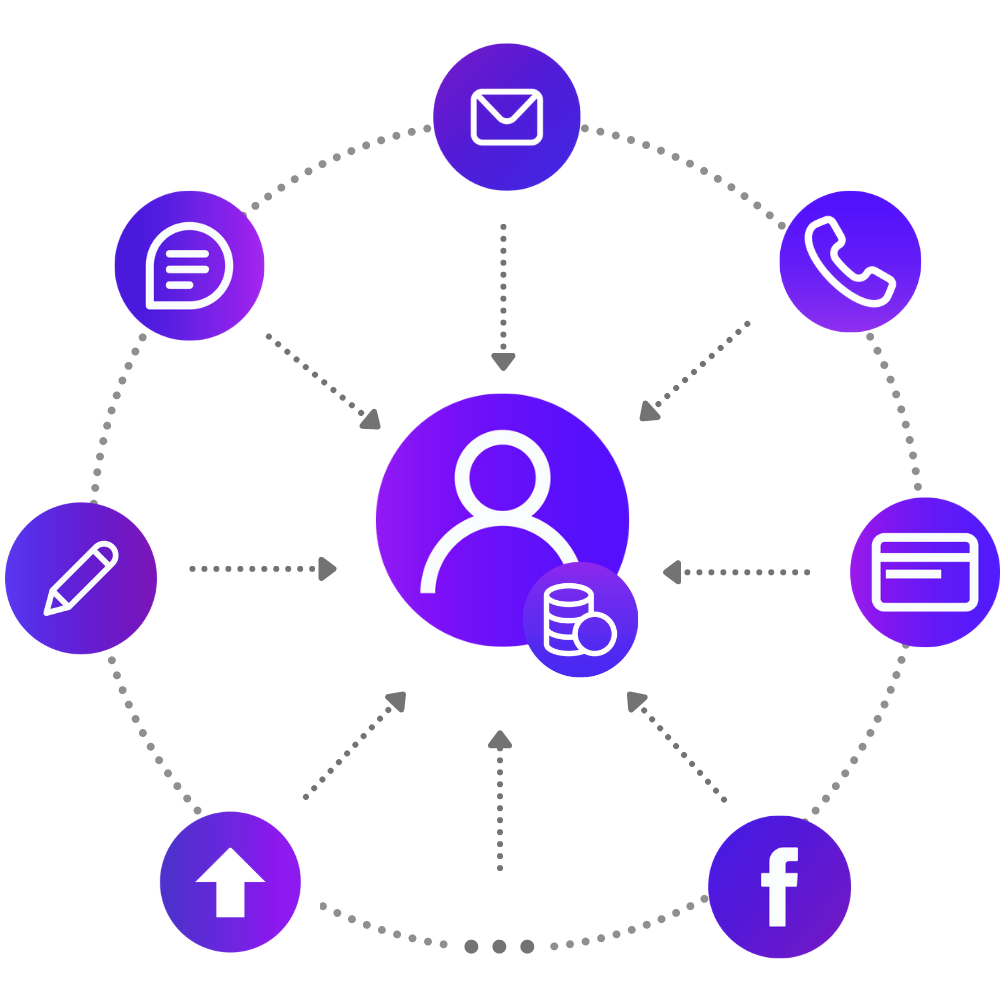Do you face disconnected interactions, inconsistent support quality, and difficulty in channel switching when using a multichannel contact center?
Example:
Imagine a customer, Sarah, who starts her interaction with a company’s customer service department by sending an email regarding a billing issue. A few hours later, she decides to follow up on her inquiry by initiating a chat session through the company’s website. Despite providing her email address when starting the chat, the agent handling the chat session has no visibility into Sarah’s previous email conversation.
Without access to Sarah’s interaction history, the chat agent asks her to repeat the details of her issue. Frustrated by the need to reiterate her problem, Sarah provides the information again. However, due to the lack of context from the previous email exchange, the chat agent cannot fully understand Sarah’s issue or provide personalized assistance.
Sarah becomes increasingly frustrated by the disjointed experience and decides to call the company’s customer service hotline to escalate her complaint. Once again, she is required to explain her issue from the beginning, as the phone agent has no knowledge of her previous interactions via email and chat.
While multichannel contact centers offer users multiple communication options, they often lack the seamless integration, contextual understanding, and personalized support provided by omnichannel solutions.
This can result in disconnected interactions, inconsistent support quality, and missed opportunities for engagement, ultimately impacting the overall user experience.
Limited Personalization
Agents might struggle to personalize interactions based on the user’s preferences and history across channels.
Inconsistent Support Quality
Support quality may vary across different channels in a multichannel contact center. Users may receive different levels of assistance or conflicting information depending on the channel they use, leading to confusion and dissatisfaction.
Difficulty in Channel Switching
You may encounter difficulties when switching between channels mid-interaction. For example, you may need to repeat information or restart conversations when transitioning from one channel to another, disrupting the flow of communication.
Complexity in Managing Multiple Channels
Managing interactions across multiple channels can be complex for both users and agents.
Missed Opportunities for Engagement
May miss out on opportunities for proactive engagement and follow-up across channels. For example, you may not receive personalized recommendations or notifications based on users previous interactions, leading to a less engaging experience.
Omnichannel Platform
An omnichannel platform is a customer experience software that will helps companies provide a consistent customer experience across all channels. Omnichannel platforms provide the ability to:
– Access real-time customer data from any channel.
– Connect with customers on any channel through automation.
– Leverage CRM data to deliver personalized experiences on any channel along the customer journey.
Omnichannel platforms are the all-in-one solution for growing companies focused on elevating customer experiences across communication channels

Omnichannel Marketing vs Multi channel Marketing


Product Category
Omnichannel
Live Chat & SMS

Benefits of Omnichannel Platforms

Proactive Customer Service
Nowadays, businesses are expected to be available to customers in their desired manner, anywhere, and anytime. With the Omnichannel platform, an enterprise quickly reaches their customer across many channels.
Active customer support should be available if a customer is reaching out through Facebook Messenger. The same is the case for website and app support.

Increase Customer Retention
Businesses that invest in omnichannel communication strategy have gained an 89% increase in customer retention and a 9.5% year-over-year increase in annual revenue.
Hence, it is essential to connect with customers and deliver consistent support across all channels. Companies that make an effort to engage their audience with an omnichannel avoid attrition and act as one of the customer retention strategies of your business.

Improve Agent Productivity Metrics
Usually, resolving an issue involves a lot of time having a long thread of back and forth conversations with the customers. The omnichannel dashboard empowers your team with real-time feedback about their customer interactions handled on each channel.

Build A Better Customer Relationship
Quality of service aside, nurturing a community around your business is essential. In addition to actively managing social media sites and replying promptly to reviews (both negative and positive), consider implementing customer relationship management.

Unified Customer Data
Omnichannel communication focuses on unifying all your customer conversations in one place to understand your customer journey better. You can gain valuable insights by analyzing previous interactions, which helps to personalize customer engagement across all the touchpoints.





